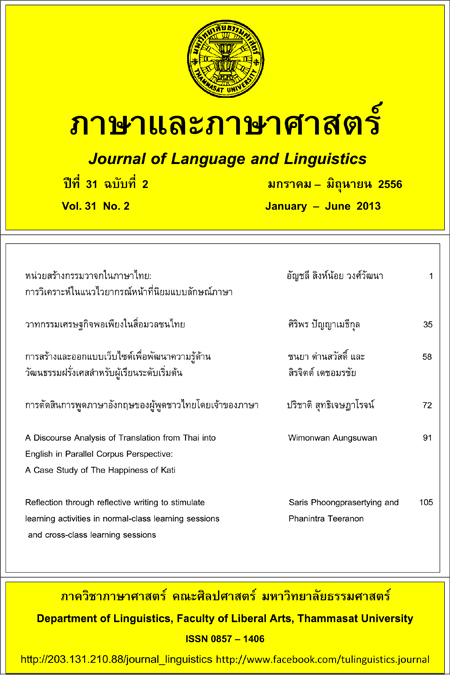A Discourse Analysis of Translation from Thai into English in Parallel Corpus Perspective: A Case Study of The Happiness of Kati
Main Article Content
Abstract
Abstract
Parallel corpus, containing original source texts and translated versions, is used for analysing translations in many languages (Hernández, 1996, pp. 218-237, Li, Zhang, & Liu, 2011, pp. 153-166). However, there are few studies on parallel corpus in translation strategies from English into Thai and Thai into English, In addition, the previous studies are focused on the structure of the language (Detnaraphan and Mallikamas, 2008; Manomaivibool, 2004; Rujirawong, 2006; Siriwonkasem, 2006; Thanalertkul, 2009). In terms of addition, the previous study was done on the structures of addition in translation from Thai into English (Decha, 2006). This study consequently aimed to analyse linguistic markers, and cultural transfer of additions found in translation strategies from Thai into English.
Both Thai and English versions of The Happiness of Kati were the sampling of this study because they received many awards such as S.E.A. Write award for Thai version, the second award of John Dryden Translation Competition for English version.
The results of the study showed that linguistic markers indicating additions contained punctuations and lexical markers. Furthermore, many types of addition were used for transferring Thai cultures from Thai to English such as the explanation of background of the characters, scenes, jokes, and cultural terms. The results of this study are useful for translation teachers, professional translators, and English teachers. Parallel corpus is useful for translation studies. Addition is important technique for intercultural communication. It helps the readers in other communities understand Thai culture easily.Article Details
บทความทุกบทความเป็นลิขสิทธิ์ของภาษาและภาษาศาสตร์

